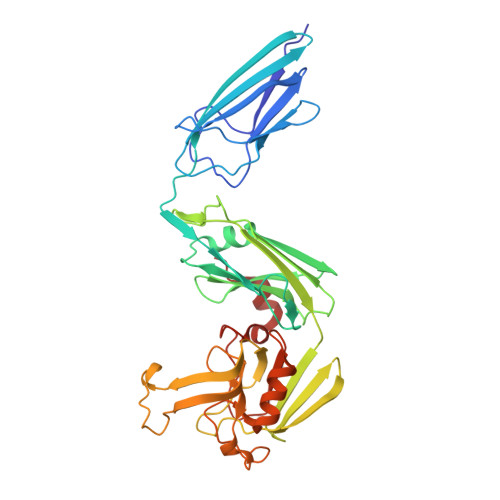High-throughput screen with the l,d-transpeptidase Ldt Mt2 of Mycobacterium tuberculosis reveals novel classes of covalently reacting inhibitors.
de Munnik, M., Lang, P.A., De Dios Anton, F., Cacho, M., Bates, R.H., Brem, J., Rodriguez Miquel, B., Schofield, C.J.(2023) Chem Sci 14: 7262-7278
- PubMed: 37416715
- DOI: https://doi.org/10.1039/d2sc06858c
- Primary Citation of Related Structures:
8A1J, 8A1K, 8A1L, 8A1M, 8A1N, 8A1O, 8AHO - PubMed Abstract:
Disruption of bacterial cell wall biosynthesis in Mycobacterium tuberculosis is a promising target for treating tuberculosis. The l,d-transpeptidase Ldt Mt2 , which is responsible for the formation of 3 → 3 cross-links in the cell wall peptidoglycan, has been identified as essential for M. tuberculosis virulence. We optimised a high-throughput assay for Ldt Mt2 , and screened a targeted library of ∼10 000 electrophilic compounds. Potent inhibitor classes were identified, including established ( e.g. , β-lactams) and unexplored covalently reacting electrophilic groups ( e.g. , cyanamides). Protein-observed mass spectrometric studies reveal most classes to react covalently and irreversibly with the Ldt Mt2 catalytic cysteine (Cys354). Crystallographic analyses of seven representative inhibitors reveal induced fit involving a loop enclosing the Ldt Mt2 active site. Several of the identified compounds have a bactericidal effect on M. tuberculosis within macrophages, one with an MIC 50 value of ∼1 μM. The results provide leads for the development of new covalently reaction inhibitors of Ldt Mt2 and other nucleophilic cysteine enzymes.
Organizational Affiliation:
Chemistry Research Laboratory, Department of Chemistry, the Ineos Oxford Institute of Antimicrobial Research, University of Oxford 12 Mansfield Road Oxford OX1 3TA UK christopher.schofield@chem.ox.ac.uk.




















